Everything you need to know about production scheduling & driving manufacturing efficiency
In his latest video, Tom Grigg discusses scheduling functionality in EnterpriseIQ (now known as DELMIAWORKS), including:
- Production scheduling
- Gannt scheduling
- Material exceptions
- Tooling exceptions
- Material colour codes.
Transcript:
Now we’re going to show you some of the scheduling capabilities of EnterpriseIQ.
By clicking through into the finite manufacturing schedule, what I can do now is select the manufacturing type. That will bring up the schedule for each type, so for instance, if we’ve got various different assembly processes or injection moulding process or extrusion processes, we can view those particular ones.
Alternatively, we can look at each individual manufacturing cell.
So what I’m going to do is look at the manufacturing type ‘injection’.
Production scheduling
This will bring up a text-based representation of the current production schedule for this work centre. The work centres are listed across the top – that’s not the only work centre in this manufacturing type. We can navigate to each of the work centres within this manufacturing type by clicking left.
Right here you can see once again colour coded, so straight away we can get a visual indication as to exactly what it is we’re looking at. Red here indicates that the work order is going to be late and green indicates that it’s going to be on time, according to the customer requirements. We’ve also got this here, where you can see that it’s white with a red text. That means that there is a material exception on the work orders so that could prevent the work order from starting on time.
Once again, it means that you can get an idea as to what it is you’re looking at without actually having to drill through. We can drag and drop these work orders, so by clicking through I can re-prioritise this work order list. Its very very easy to create your work-to list for each of your work centres.
Gantt Scheduling
What we can also do is look at our Gantt scheduling view.
This is a graphical representation of the current capacity on the shop floor. This is what you may be used to, in terms of a typical representation of a schedule for a manufacturing organisation.
Once again, colour-coded, so we can see what’s going to be on time, what’s going to be late, where there is scheduled downtime for the work centre. I’ve got a list of work centres on the left-hand side.
It’s very easy to manipulate this schedule. Once again, drag and drop functionality, so by clicking on a work order, we can drag it to one of the other work centres. Important to note, on the left-hand side, you can see that most of the work centres have been greyed out. That basically means that those two work centres are the only ones that are capable of running this work order, and that’s actually defined on the bill of manufacture.
You’ll also see that next to those work centre names there’s an efficiency factor or efficiency percentage. That’s information that’s captured from our live, real-time production monitoring system.
So that we can then, when we’re manipulating this production schedule, understand what the most efficient route is or alternative to the priority machine, where we should put this work order.
just gonna close this down
Now, there are a few different ways that we can view this data as well.
Material exceptions
We can look at things such as material exceptions, which will then give us a view of just the work orders on this production schedule that have material exceptions – so all of these ones here.
Basically this is anywhere that the work order might not necessarily start on time, because the material isn’t available.
Tooling exceptions
We can also view by tooling exceptions, so remember we can specify tooling on the bill of manufacture. If there are any clashes in terms of tooling requirements, that will appear here also on the production schedule.
Material colour codes
Another thing we could do is view by material colour codes. This is very specific to plastic manufacturing.
Against all of our raw materials, or all of our items, we can actually specify a colour code. That colour code will directly relate to one of these colours that you can see on this board.
If you’re thinking ‘where’s that appropriate?’, if you can imagine that you might colour code from light to dark for instance so you’ve got:
- White (one)
- Grey (two)
- Black (three)
Each of those would be represented here in a different colour format. So effectively, we could ensure that we’re always running our machines from light to dark, rather than dark to light so that we can really minimise the amount of purge that we’re gonna need to do on that machine. It just means that obviously we lose time every time we’ve closed the machine we lose material so it just makes a lot more efficient and economical


